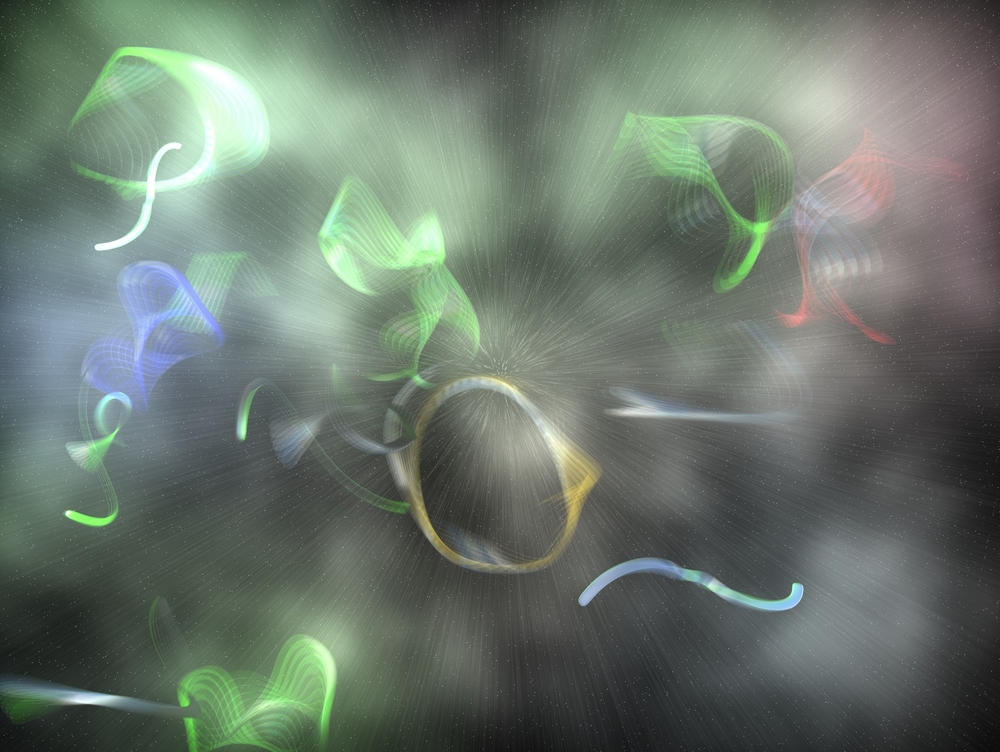Putting string theory to the test


Paul M. Sutter is an astrophysicist at SUNY Stony Brook and the Flatiron Institute, host of Ask a Spaceman and Space Radio, and author of "Your Place in the Universe." Sutter contributed this article to Space.com's Expert Voices: Op-Ed & Insights.
String theory hopes to be a literal theory of everything, a single unifying framework that explains all the variety and richness that we see in the cosmos and in our particle colliders, from the way gravity behaves to whatever the heck dark energy is to why electrons have the mass that they do. And while it's a potentially powerful idea, which if unlocked would completely revolutionize our understanding of the physical world, it has not ever been directly tested.
There have been, however, ways to explore some of the underpinnings and potential consequences of string theory. And while these tests wouldn't prove string theory directly one way or another, they would help bolster its case. Let's explore.
Related: Why string theory persists — despite the knotty physics
A perturbing problem
First, though, we have to examine why string theory is so hard to test. There are two reasons.
The strings of string theory are stupendously small, thought to be somewhere around the Planck scale, a bare 10^-34 meters across. That's far, far smaller than anything we can possibly hope to probe even with our most precise instruments. The strings are so small, in fact, that they appear to us to be point-like particles, such as electrons and photons and neutrons. We simply can't ever stare at a string directly.
Related to that smallness is the energy scale needed to probe the regimes where string theory actually matters. As of today, we have two different approaches for explaining the four forces of nature. On one hand, we have the techniques of quantum field theory, which provide a microscopic description of electromagnetism and the two nuclear forces. And on the other we have general relativity, which allows us to understand gravity as the bending and warping of spacetime.
Breaking space news, the latest updates on rocket launches, skywatching events and more!
For all cases that we can directly examine, using one or the other is just fine. String theory only comes into play when we try to combine all four forces with a single description, which only really matters at the very highest energy scales — so high that we could never, ever build a machine to reach such heights.
But even if we could devise a particle collider to directly probe the energies of quantum gravity, we couldn't test string theory, because as of yet string theory isn't complete. It doesn't exist. We only have approximations that we hope come close to the actual theory, but we have no idea how right (or wrong) we are. So string theory isn't even up to the task of making predictions that we could compare to hypothetical experiments.
Related: The history and structure of the universe (infographic)
Cosmic blues
Even though we can't reach the energies needed in our particle colliders to really take an in-depth look into the potential world of strings, 13.8 billion years ago our entire universe was a cauldron of fundamental forces. Perhaps we might gain some stringy insights by looking into the history of the Big Bang.
One suggestion put forth by the string theorists is another kind of theoretical string: the cosmic string. Cosmic strings are universe-spanning defects in spacetime, leftover from the earliest moments of the Big Bang, and they're a pretty generic prediction of the physics of those epochs of the universe.
But cosmic strings might also be super-duper-stretched-out strings from string theory, which are usually so small that "microscopic" is too big of a word, but have been stretched and pulled by the incessant expansion of the universe. So if we found a cosmic string floating around out there in the cosmos, we could study it carefully and check if it's really something predicted by string theory.
To date, no cosmic strings have been found in our universe.
Still, the search is on. If we found a cosmic string, it wouldn't necessarily validate string theory — there would be a lot more work needed to be done, both theoretically and observationally, to tell apart the string theory prediction from the crack-in-spacetime version.
Not so supersymmetry
Still, we might be able to pick up some interesting clues, and one of those clues is supersymmetry. Supersymmetry is a hypothesized symmetry of nature that links together all the fermions (the building blocks of reality like electrons and quarks) with the bosons (the carriers of the forces like gluons and photons) under a single framework.
The machinery of supersymmetry was first worked out by string theorists, but took fire as an interesting avenue for all high-energy physicists to potentially solve some problems with the Standard Model and make predictions for new physics. Within string theory, supersymmetry allows the strings to describe not just the forces of nature but also the building blocks, giving that theory the power to truly be a theory of everything.
So if we found evidence for supersymmetry, it wouldn't prove string theory, but it would be a major steppingstone.
We haven't found any evidence for supersymmetry.
The Large Hadron Collider (LHC) was explicitly designed to explore supersymmetry, or at least some of the simplest and easiest-to-reach versions of supersymmetry, by looking for new particles predicted by the theory. The LHC has turned up completely empty, without even a whiff of a new supersymmetric particle, wiping all the simplest supersymmetry ideas completely off the map.
And while this negative result doesn't rule out string theory, it doesn't make it look too great, either.
Will we one day have evidence for even one of the underpinnings or side predictions of string theory? It's impossible to say. A lot of hopes were pinned on supersymmetry, which has so far failed to deliver, and questions remain about whether it's worth it to build even-larger colliders to try pushing harder on supersymmetry, or if we should just give up and try something else.
- How the universe could possibly have more dimensions
- Mysterious particles spewing from Antarctica defy physics
- The Big Bang: What really happened at our universe's birth?
Learn more by listening to the episode "Is String Theory worth it? (Part 6: We Should Probably Test This)" on the Ask A Spaceman podcast, available on iTunes and on the Web at http://www.askaspaceman.com. Thanks to John C., Zachary H., @edit_room, Matthew Y., Christopher L., Krizna W., Sayan P., Neha S., Zachary H., Joyce S., Mauricio M., @shrenicshah, Panos T., Dhruv R., Maria A., Ter B., oiSnowy, Evan T., Dan M., Jon T., @twblanchard, Aurie, Christopher M., @unplugged_wire, Giacomo S., Gully F. for the questions that led to this piece! Ask your own question on Twitter using #AskASpaceman or by following Paul @PaulMattSutter and facebook.com/PaulMattSutter.
OFFER: Save at least 56% with our latest magazine deal!
All About Space magazine takes you on an awe-inspiring journey through our solar system and beyond, from the amazing technology and spacecraft that enables humanity to venture into orbit, to the complexities of space science.

Paul M. Sutter is a cosmologist at Johns Hopkins University, host of Ask a Spaceman, and author of How to Die in Space.



